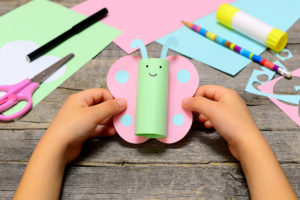Preparing Children for School Transitions
Starting school can be a scary time, not just for children, but also for parents and teachers. After all, as much as we want them to have fun, I meet many parents who are terrified of the thought of their children going off to school, and some teachers who question themselves and the strategies that they are using as they want to make transitions seamless.
Since the pandemic, the number of children presenting with emotionally based school avoidance and separation anxiety has increased. This means, that our support for school transitions needs to be even more carefully considered.
Depending on a child’s previous patterns of experiences and thoughts about ‘change’, will impact the feelings or behaviours that presents at the concept of changing school/going to a new school, or changing class. So if:
Change = Scary = anxiety is created
Change = Painful/Hurtful = phobia or panic
Change = Hard = overwhelming
Change = Exciting = happiness/anticipation
Considerations:
#Changes are scary –For some children change is really hard, they have not yet built a resilience or ability to navigate change and this means that a new school , a new school year or a new school teacher can create a high level of anxiety
#Sensitivity is high – Some children are sensitive to the world around them. They react emotionally, physically and spiritually to change and as such they do not respond to normal techniques used for transitions. They do not necessarily respond to rewards or sticker charts, the tough love approach creates panic or fear. They need something different.
#Anxiety is present – For a child who experiences anxiety or separation anxiety, transitions to a new school, year or teacher can heighten the reactions and parents can feel that their child is going backwards, perhaps after a successful previous year.
#Previous experience – If a child has had to navigate previous transitions which have not been successful, or have had a large number of transitions or changes in a short time another new change can create sheer panic/fear. The concept of yet another ‘new’ thing to manage can create a fight/flight reaction in that child.
Supporting
The core of creating safety in the brain is to develop a sense of:
- familiarity
- consistency
- connection
Familiarity includes – Our comprehension of the environment starts with removing the ‘what ifs’ and the fear of the unknown. This sense of familiarity begins with how my uniform fees, what my school bag does and an understanding of the fundamentals. Extending to the travel to school, what the foyer looks like, where my class is, how I find the toilets, where I go if I need help or feel ill. This can include talking photographs, drawing a map of the school and taking walks and pointing out the parts of the school we know.
Consistency includes – Considering the language we use surrounding school, children run off of adult energies. If we surround them with language of doubt or worry, they will respond to this. If we surround them with positivity or optimism they will respond to this. We need to be able to detach our own worries from a child, and also consider that sometimes, in trying to prepare them, we can spend too much time focussing on what ‘could go wrong’. Children’s brains are in the early stages of development, and therefore, their fight-flight response reacts more quickly, when we offer fearful language their brain feels unsafe. Consider how all of those surrounding the child are talking about it – look for balance, with a view of optimism.
Connection includes – Developing connections with teachers, peers and support staff. Have I met and had 1:1 contact with my teacher? Teaching assistant? SENCO? Do I feel recognised and heard? This should be in person but also can be followed up in writing such as a postcard or note which allows me to ‘feel’ a connection. Or a video to ‘see’ and ‘hear’ the connection. Connect all the senses as well as presence.
For younger children, you may want to look at our book ‘Brian and the New School’ here
Want to learn more?
Are you looking for a deeper understanding of child mental health? Our Level 4 Child and Adolescent Mental Health Coaching Diploma takes you into an in depth dive of child mental health and how you can support. You can join our Level 4 training (here).
© Dandelion Training and Development – All Rights Reserved
Further help
For more articles about mental health visit – ARTICLES
To learn more about child and adolescent mental health visit – COURSES
For resources to support child and adolescent mental health visit –RESOURCES



